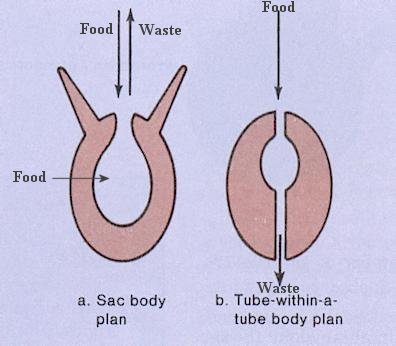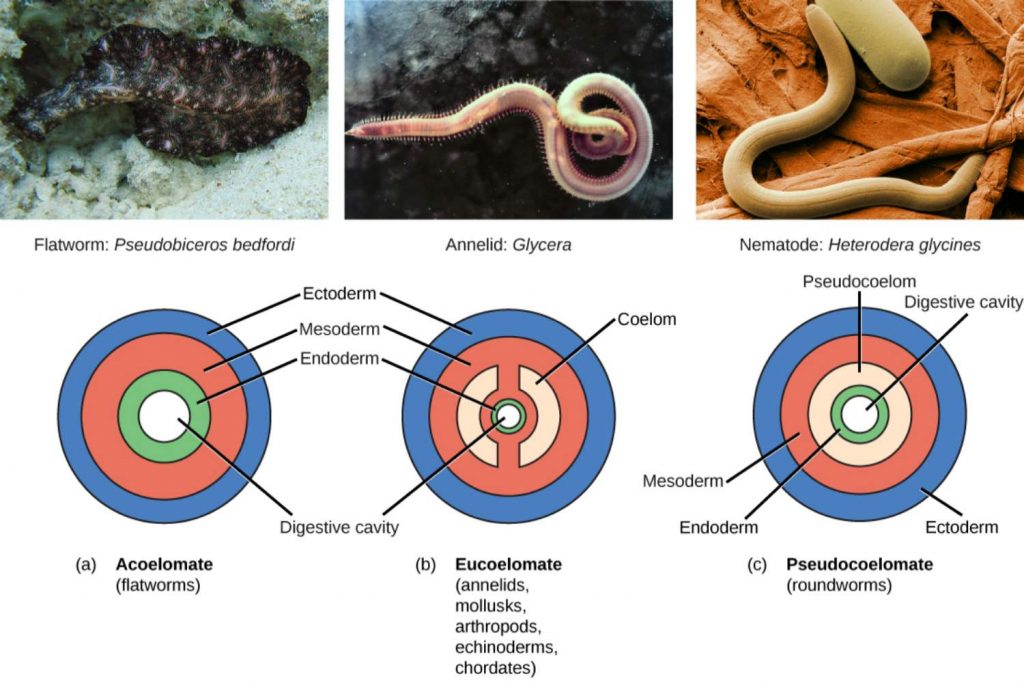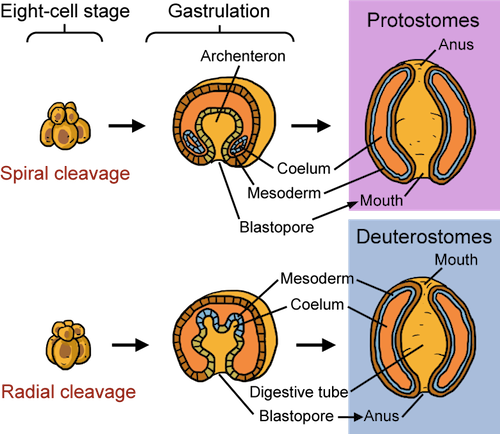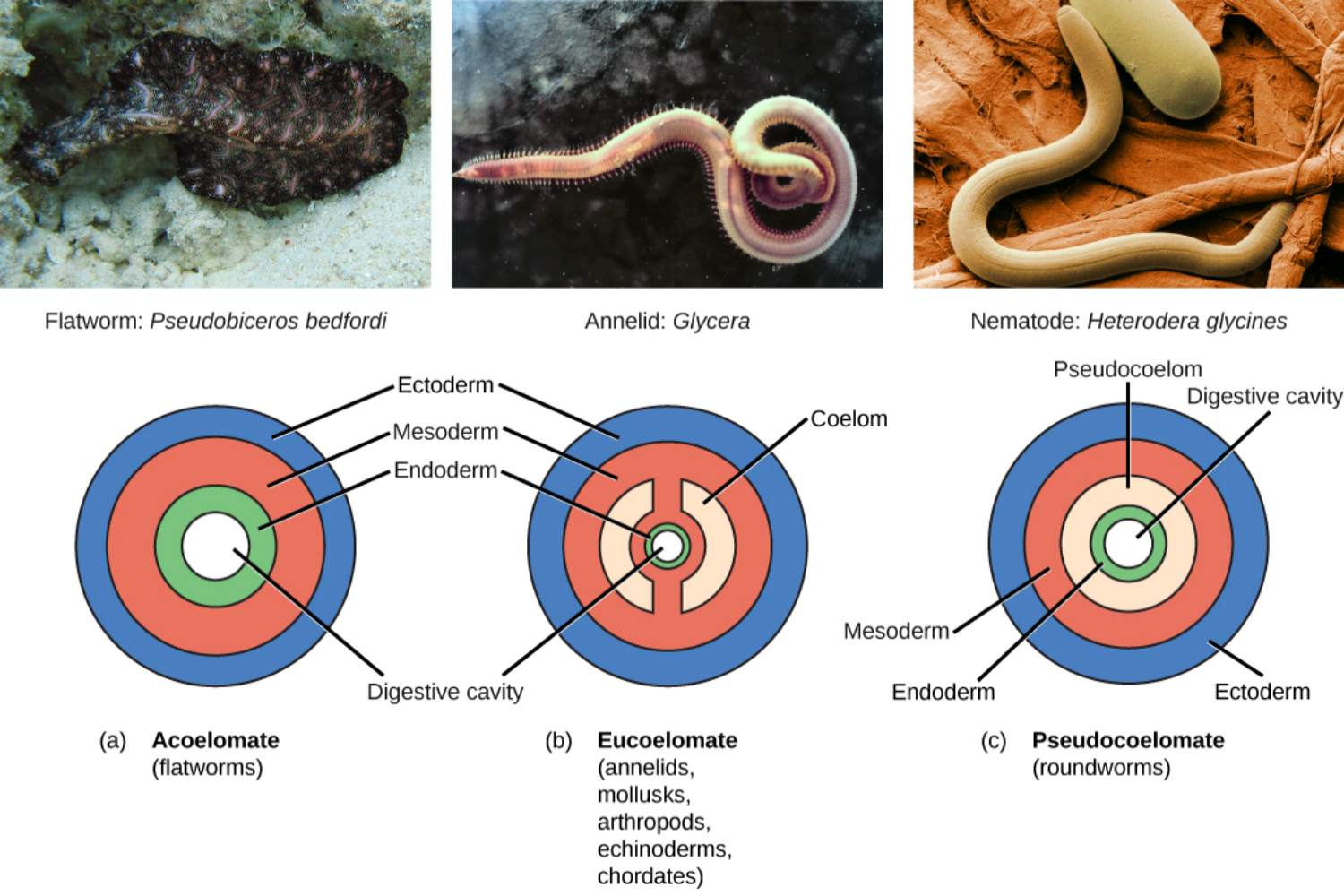Animal Kingdom covers about 35-phyla, of which 11 are considered to be major phyla. In major phyla, 10 are from Non-chordates and 1 from chordates. The 11-major phyla are –
- Phylum Protozoa: single-celled (solitary or colonial)Eukaryotes
- Phylum Porifera: Sponges
- Phylum Cnidaria: Jellyfishes and sea anemones
- Phylum Ctenophora*: Comb jellies
- Phylum Platyhelminthes: Flat warms
- Phylum Aschelminthes: Roundworms or threadworms.
- Phylum Annelida: Segmented worms (Earthworm, Leech etc.)
- Phylum Arthropoda: Jointed legged-invertebrates
- Phylum Mollusca: Snails, bivalves, octopus etc.
- Phylum Echinodermata: Seastar, Brittle star, Sea lily etc.
- Phylum Chordata: Protochordates and vertebrates
(*As Ctenophora includes less than 100 species, it is generally considered as a Minor Phylum with Rotifera, Phoronida, Brachiopoda and Gastrotricha etc.).
From 1 – 10 are Non-chordates (Invertebrates).
Protozoans are single-celled Eukaryotes (classified in Kingdom Protista). The porifers to chordates, all multi-cellular, are called metazoans (placed in Kingdom Animalia). The metazoans are further differentiated into Parazoans and Eumetazoans. The group ‘Parazoa’ includes porifers, having a cellular grade of organization, and ‘Eumetazoa’ includes Coelenterates (Cnidarians) to chordates.
The following account will be useful in understanding complexity, the basis of classification and the terminology used in higher forms.
Grade or Level of organization – There are 5-grades of organization in animals.
- Sub-cellular / Protoplasmic grade of organization – This level of organization is present in protozoans or single-celled organisms. The different functions of the body are carried out by different organelles of the cell. In Amoeba and Paramecium, for example, the osmoregulation is carried out by contractile vaccuole and the locomotion by pseudopodia and cilia respectively.
- Cellular grade of organization – This occurs in porifers where individual function is performed by a particular cell. The choanocytes, for example, by flagellar beating create water current for filter-feeding; the thesocytes store reserve food material; the scleroblasts form spicules and myocytes are related to the contractile functions, and so on.
- Tissue / Cell-tissue grade of organization – It has developed in Cnidaria and Ctenophora where specific tissues, like nervous tissue, gonadal tissue and other such structures have been developed.
- Organ / Tissue-organ grade of organization – It is found in fl at warms (Platyhelminthes) where various types of tissues have been organized to form organs, like brain, excretory organs etc.
- System/Organ-system grade of organization – From Aschelminthes to Chordata, all have organ system – grade of organization. They have developed various systems, like digestive, reproductive, respiratory and circulatory etc. up to various degree of complexity
Body Wall
In metazoans, the body develops from two or three germ layers i.e., ectoderm and endoderm, or the ectoderm, mesoderm and endoderm.
- Diploblastic Body Wall – eg. Porifers and Cnidarians
The body of the organism develops from two germ layers, i.e., ectoderm and endoderm, cemented together by mesoglea, a non-cellular layer. - Triploblastic Body Wall – eg. Platyhelminthes to Chordates
The body of such animals develops from all three germ layers, i.e., ectoderm, mesoderm and endoderm.
Symmetry
Some of the protozoans like Amoeba, Entamoeba, and most of the porifers are asymmetrical. But the higher forms have a specific symmetry. There are 4-major types of symmetry in animal kingdom.
- Radial symmetry – eg. Cnidarians (except Anthozoans) and Echinoderms. In Cnidarians body is cylindrical, and if cut longitudinally through any radius, the two halves will be morphologically identical. The right and left, or the dorsal and ventral sides, in such symmetry are not differentiated. The radial symmetry is advantageous to sessile (attached) animals as they can feed from all directions.
- Bilateral symmetry – eg. Platyhelminthes to Molluscs, and all chordates. The body of such animals can be differentiated into right and left halves because they show lateral – symmetry. The body can be cut longitudinally (sagittal section) into two equal halves only through one axis, i.e., dorsoventral.
- Biradial symmetry – eg. Anthozoans (Cnidarians) and Ctenophores. Such animals show similar parts on either side of the body axis, such that, each of the four sides of the body is identical to the opposite side but is different from the adjacent side. It is different from tetraradial symmetry. Moreover, the internal organization of such animals is always bilateral.
- Spherical symmetry – eg. Some protists (Volvox). The body in such organisms is ball-shaped or spherical and both longitudinal and equational cut can produce to similar halves.

Body Plan
There are 3-types of body plans, mainly depending upon the presence or absence, or the complexity, of the gut.
- Cell-aggregate Body Plan – eg. Porifers. The gut is not differentiated and the digestion is wholly intracellular. The whole body consists of a group of well-differentiated cells.
- Blind sac Body Plan – eg. Cnidarians, Ctenophores and Platyhelminthes. The gut cavity has a single, ‘mouth’ opening. The anal opening is absent. The alimentary canal is, therefore, a blind sac. The undigested waste in such cases is also removed through the same opening.
- Tube-within-Tube Body Plan – eg. Aschelminthes to Chordates. The gut is complete, tubular and more complex with separate mouth and anal openings.

Coelom
It is a body cavity present between the body wall and gut. On the basis of body cavity, the animals can be differentiated into three categories.
- Acoelomates – eg. Porifers, Cnidarians and Platyhelminthes. In such animals, either the gut is not differentiated (eg. Porifers) or if it is differentiated (eg. Gastrovascular cavity of Cnidarians or incomplete gut of Platyhelminthes) then there is no cavity between body wall and the gut. In Platyhelminthes, the space between ectoderm and endoderm is filled with mesodermal tissue.
- Pseudocoelomates – eg. Aschelminthes (Nematodes) and Rotifers. When the body cavity, in between body wall and the gut, is lined by mesoderm, only on one side, i.e., towards body wall, it is called Pseudocoel. Such cavity represents persistant blastocoel. The gut cavity in such animals is not muscular (mesoderm absent around gut) and the organs also lie loose (mesenteries absent).
- Eucoelomates – eg. Annelids to Chordates. The eucoelomate animals have ‘true coelom’, i.e., a body cavity lined with mesoderm on both sides. The mesodermal/muscular lining allows the organs to move independently. The organs in true coelom are held in place by mesenteries. On the basis of origin, the true coelom is of 2-types.
- Schizocoel – eg. Annelids, Arthropods and Molluscs. Such coelom develops by the splitting of mesodermal segments.
- Enterocoel – eg. Echinoderms and Chordates. This type of coelom develops by pouching or out pocketing of the archenteron (cavity
of gastrula).

Protostomes and Deuterostomes – eg. All Eucoelomates
In Protostomes (eg. Annelids, Arthropods and Molluscs) the mouth appear at the site of blastopore (Gk. protos – first, stoma – mouth) and Anus developes later, opposite to mouth opening.
In Deuterostomes (eg. Echinoderms and chordates) the anus developes at the site of
blastopore and mouth developes later, as a second opening, opposite to the anal opening (Gk. Deuteros – second, stoma – mouth).
| Protostomes | Deuterostomes |
|---|---|
| Blastopore (opening of the archenteron cavity of gastrula) is associated with the formation of mouth. | Blastopore is associated with the formation of Anus. |
| The pattern of Cleavage in embryo is spiral i.e. the daughter cells of a new tier lie obliquely (spirally), at the junction of previous cells. (Due to large amount of yolk the cleavage in arthropods is highly modifi ed, i.e. being superfi cial meroblastic. | The pattern of cleavage in embryo is radial i.e., the daughter cells of a new tier lie vertically at the top or bottom of the previous cells. |
| The fate of cleavage is determinate or fixed. The separated cells at 4-celled stage cannot form complete embryos, since the structure to be developed by missing cells will not be formed. | The fate of the cleavage cells is indeterminate. The separated cells at 4-celled stage can form complete (though smaller) embryos as the individual cells have no defi nite fate. |
| Coelom is true – Schizocoel (type) | Coelom is true– ‘Enterocoel’ (type) |

Anamniota and Amniota
Amongst higher vertebrates (eg. Reptiles, Birds and Mammals) the development of the eggs is either outside the body (oviparous) and the eggs are Cleidoic (shelled or box-like), or it is inside the body (Ovoviviparous or viviparous), and the eggs are non-cleidoic. All such animals have extraembryonic membranes, i.e., amnion, chorion and allantois (yolk sack also) either to face terrestrial environment or for the formation of placenta. Such animals are called amniotes (with amnion). The lower vertebrates, without amnion, or other extra-embryonic membranes are, therefore, called Anamniotes. The Anamniotes include cyclostomes, fishes and amphibians.
 Buy Me A Coffee
Buy Me A Coffee




Leave a Reply
You must be logged in to post a comment.